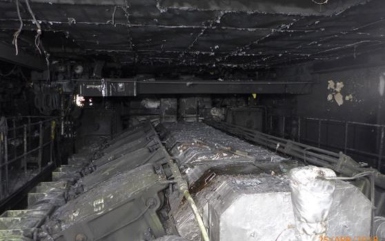
The Swedish P&I Club has described in its Monthly Safety Scenario the case of a bulk carrier grounding caused by engine failure. Soon after departing port, a main engine slowdown alarm was triggered due to a loss of cooling water in the main engine. The Master ordered half head, but there was no response from the engine.
The bulk carrier in question loaded a cargo of soya beans in a North American port prior to travelling to Asia. When loading was completed, the vessel anchored to wait for a favourable tide. At midnight, the vessel departed and headed through the fairway. A pilot was onboard and a pilot briefing had been carried out with the Master. Continue reading “Overtightening of locating bolts led to engine failure and grounding”







 DNV GL, the world’s leading classification society, has released a white paper – “Closing the safety gap in an era of transformation”. The white paper identifies a looming “safety gap” between shipping’s existing approach to safety risks and its ambitions for greater digitalisation and the adoption of alternative fuels.
DNV GL, the world’s leading classification society, has released a white paper – “Closing the safety gap in an era of transformation”. The white paper identifies a looming “safety gap” between shipping’s existing approach to safety risks and its ambitions for greater digitalisation and the adoption of alternative fuels.

